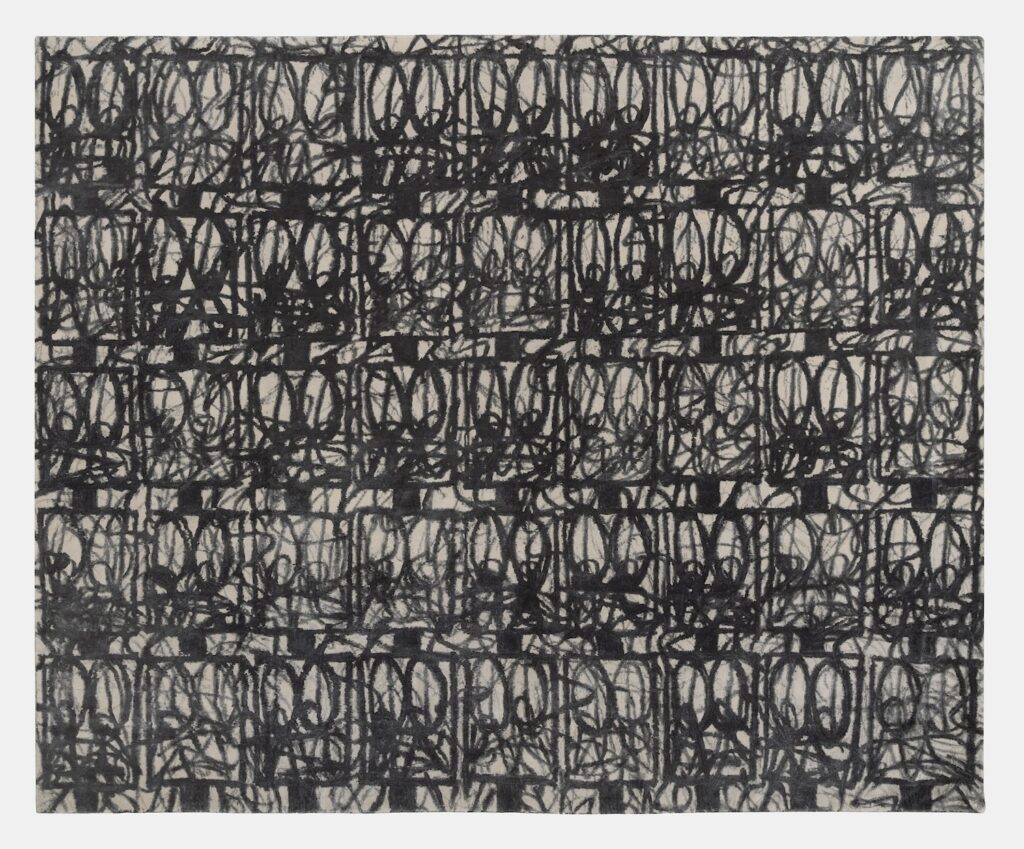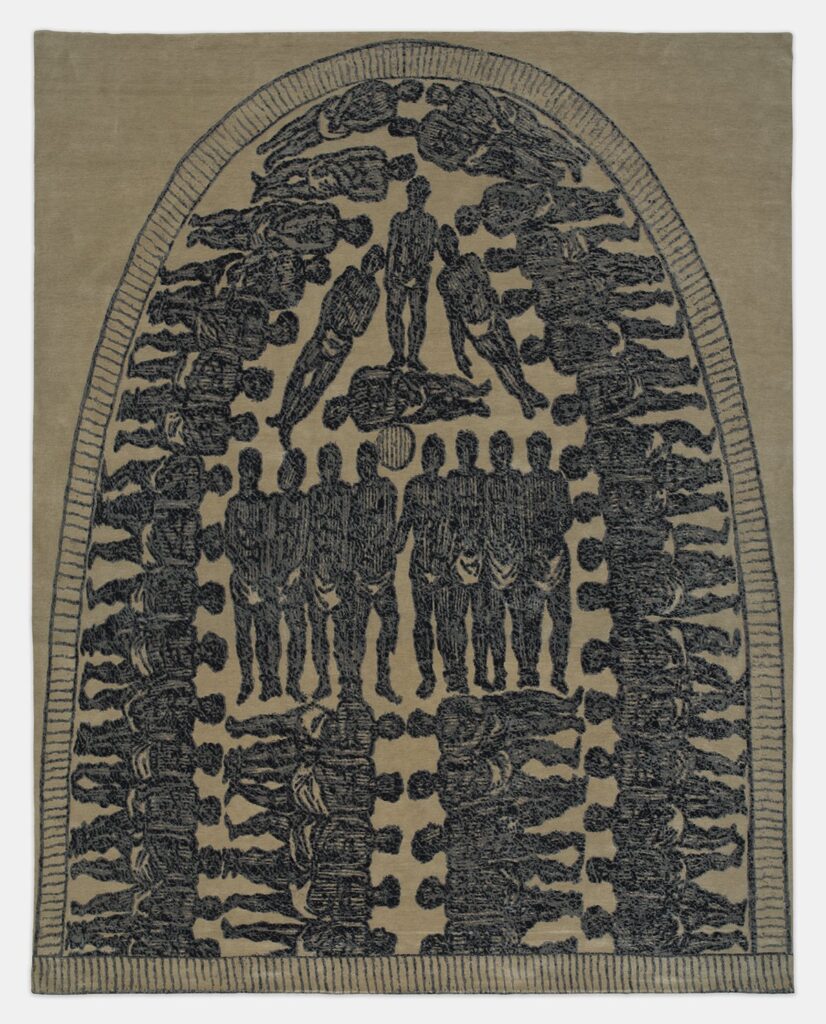
Reader, when I say I was not prepared,
when I clicked through the BravinLee email announcement of the new artist carpet design by Rashid Johnson—an Anxious yet handsome rug that manages the sometimes tricky balance of artist’s credible aesthetic and conceptual rugness, and also manages to be “a meditation on race, class, identity and the essential human struggle with isolation, meaning and anxiety,”
only to discover I’d missed the introduction this year of a new artist rug by Willie Cole, and no, the stark but small rug with Cole’s familiar motif of an iron mark, which was released in 2019, did not prepare me,

For the 12×10 foot, hand-knotted monument that is Original Sin. Cole has gone from abstract to searing representation with the 1789 abolitionist drawing of conditions of the Middle Passage. First published by Thomas Clarkson as “Stowage of the British Slave Ship ‘Brookes’ under the Regulated Slave Trade Act of 1788,” the drawing quickly became an an abolitionist staple on both sides of the Atlantic.
The question immediately arises: do you have a space hallowed enough to put this on the floor? And I think the answer is, if you put this on the floor, you will.
In an essay excerpted by BravinLee [and published in full], noted art advisor Halima Taha rhapsodizes on the creation and impact of Cole’s Original Sin carpet:
Just as a rug lays a foundation for a room, offering a canvas for intricate designs and patterns to unfold, the thread of American history serves as a foundation for contemplation, weaving together the diverse threads of the nation’s past to create a complex and rich narrative. Each thread in a rug represents a different culture, event, or individual, much like the various elements that have contributed to shaping America’s identity. By examining these intricate weavings of history, one can better understand the complexities, challenges, and triumphs that have defined the American experience. The rug created by Willie Cole, entitled Original Sin, challenges the viewer to decide if the rug should be on the wall or the floor.
So I guess the question that should have arisen is, do you have a wall big enough to install a 14-foot carpet? Because if you do, you will be turning it into a Sistine Chapel of Black history and liberation, so don’t screw it up.
Taha suggests, though, that there can be hope underfoot. Walking on the carpet depicting this inhumane history “could also be interpreted as attempting to stomp out that pain, to reshape and transcend it, or to dance in jubilant celebration akin to Juneteenth, evoking the spirit of resilience and triumph over adversity or standing on the foundations of American prosperity.”
